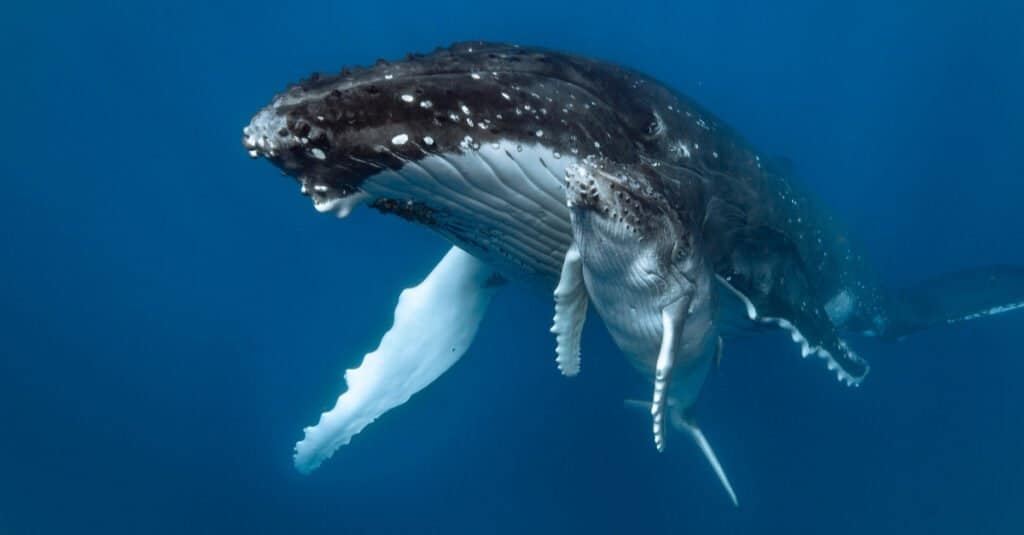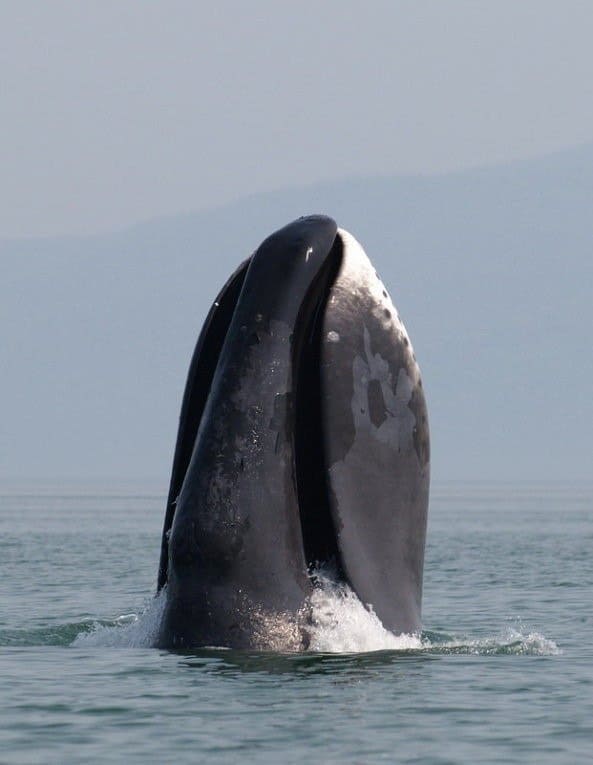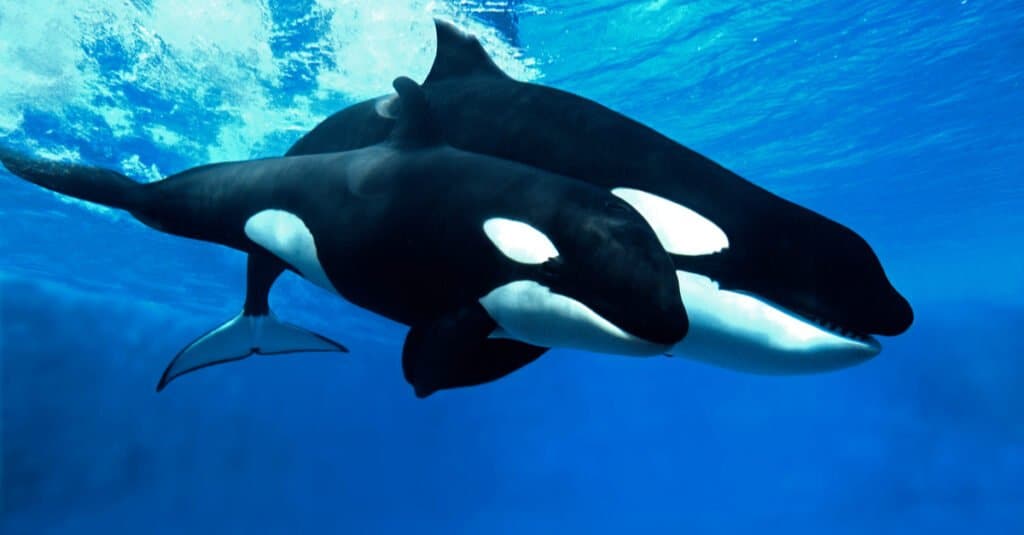There’s no doubt that baby whales are ridiculously adorable giants under the sea. They are miraculous sea creatures that are among the largest animals in the entire world. Did you know that baby blue whales gain an average of 200 pounds a day or that whale calves nurse more than 40 times a day? Keep reading to find out five amazing whale calf facts and to look at some seriously cute pictures.
#1: Baby Whales Can’t Breathe Underwater

Baby whales use their blowholes to breathe.
©Justin Berken/Shutterstock.com
Did you know that baby whales can’t breathe underwater? It’s true! Even though they are marine animals, whales are mammals, which means they lack the gills that are needed to help them breathe underwater.
Instead of extracting oxygen from the water, whales use their blowholes to breathe air in from the surface of the water. They use their mouths exclusively for eating and actually aren’t physically able to breathe out of them. Some whales even have two blowholes because they are so large!
Since whales can’t breathe while they swim around under the sea, it means they must hold their breath. The average whale can hold its breath for up to 90 minutes before needing to come up for more air! That’s about the same amount of time it takes to watch an entire movie!
#2: Whale Calves are Seriously Huge!

A mother
whale swims with her baby
.
©martin_hristov/Shutterstock.com
Whales are some of the largest animals in the world, and baby whales are no exception. Baby whale calves, who will grow up to be the largest mammal in the world, are born weighing an astounding six to eight tons. These giant babies take about ten to fifteen years to reach full maturity and can live up to 90 years in the wild.
As baby blue whales grow, they are expected to gain about 200 pounds a day. Their mother’s milk is extremely high in fat, which allows them to pack on the pounds at this astounding rate. These statistics make the blue whale calf the fastest-growing animal in the world.
The sperm whale and right whale are also among the largest whales on the planet. Both species weigh about a ton as newborns.
#3: Beluga Baby Calves Can Swim Backward

Baby Beluga whales are the only whales that can swim backward.
©Christopher Meder/Shutterstock.com
Baby beluga whales are one of the most unique whales in the world. For instance, these adorable calves can swim backward and blow bubbles, traits that are absent in other whale species.
Ready for another fact that sets baby Beluga whales apart from the crowd? They undergo an annual molt. This means that once a year, they completely shed their skin to reveal a new layer of skin underneath.
Since baby Beluga whales are Arctic whales, they also lack a dorsal fin. This helps make sure they are able to stay warm in the cold waters, since these fins allow too much heat the escape their bodies. These adorable babies have a layer of blubber beneath their skin that helps lock heat despite the extremely low temperatures of the water they live in.
#4: Baby Bowhead Whales Can Live to be 200 Years Old!

A bowhead whale breaches off the coast of western Sea of Okhotsk
©Olga Shpak / CC BY-SA 3.0, via Wikimedia Commons – License
Of all the baby whales on the planet, bowhead whale calves live to be the oldest. On average, these babies have a lifespan of 200 years or more. Not only are they the longest-living whale, though; they are also one of the longest-living animals in the world and hold the #1 spot for mammals with the longest lifespan.
#5: Baby Whales Nurse More Than 40 Times a Day

Baby whales nurse over 40 times a day!
©slowmotiongli/Shutterstock.com
We already know that baby whales put on some serious pounds daily. The largest whales can gain up to 200 pounds a day. You can probably imagine how much food a whale needs to eat to gain this much weight, but it’s hard to fathom how breastmilk alone could allow whales to grow this quickly.
Whale breastmilk isn’t similar in texture or thickness to the milk in your fridge. It is similar in consistency to cottage cheese and in thickness to a milkshake. This is because since baby whales need a ton of sustenance to sustain such extreme growth, the breastmilk has a fat content of anywhere from 35% to 50%.
Mother sharks can produce up to 200 liters of milk a day. Their mammary glands can weigh as much as a baby elephant! Now, that’s a lot of milk!
The photo featured at the top of this post is © Imagine Earth Photography/Shutterstock.com
FAQs (Frequently Asked Questions)
What are baby whales called?
Baby whales are called calves.
How big are baby whales?
Whale calves range in size depending on the species. The largest baby whales are born weighing around eight tons. The smallest weighs about 85 pounds as newborns.
What do baby whales eat?
Baby whales survive on their mothers milk for the first year. After that, they eat a diet of fish, squid, and krill.
Thank you for reading! Have some feedback for us? Contact the AZ Animals editorial team.






